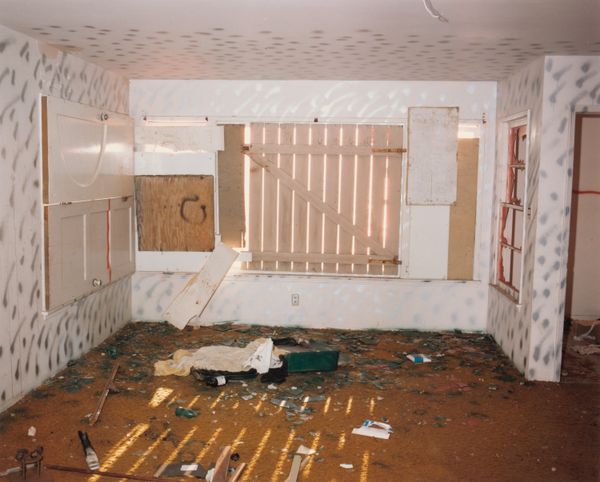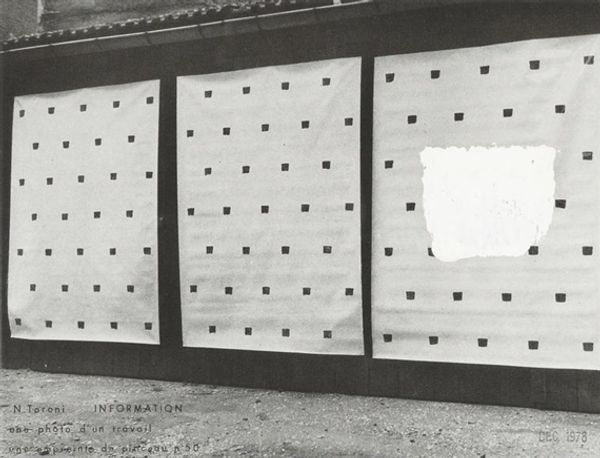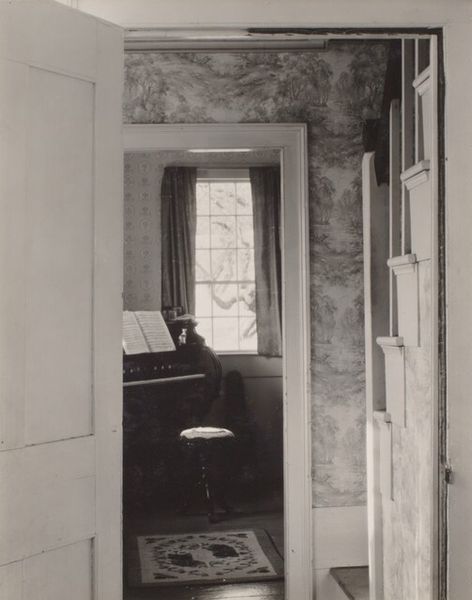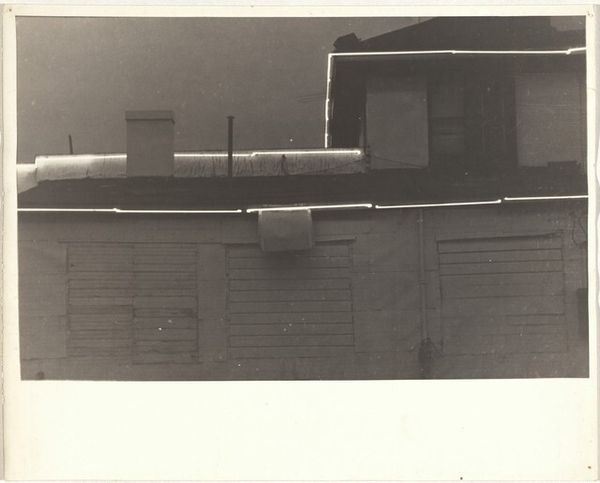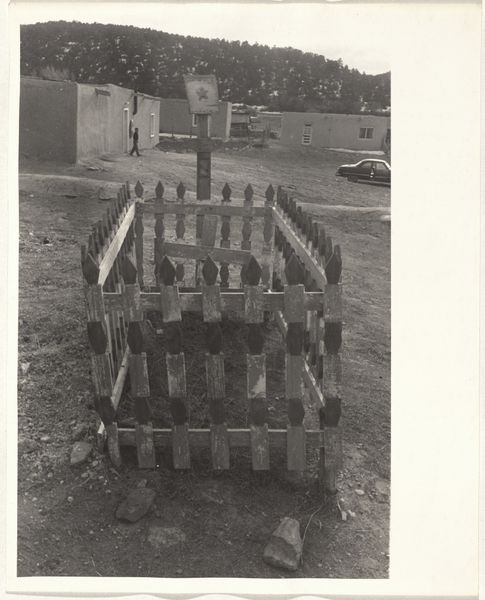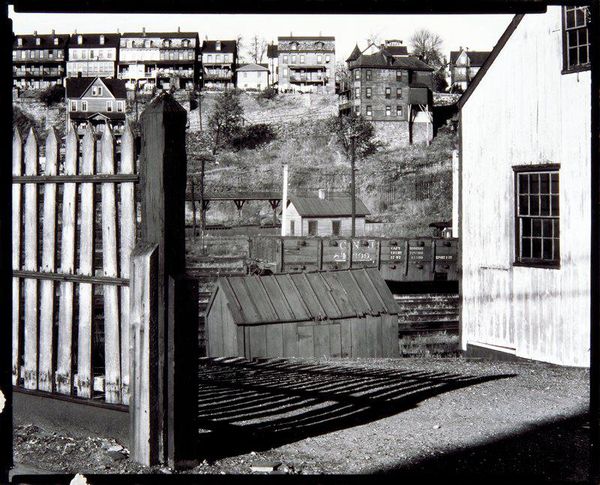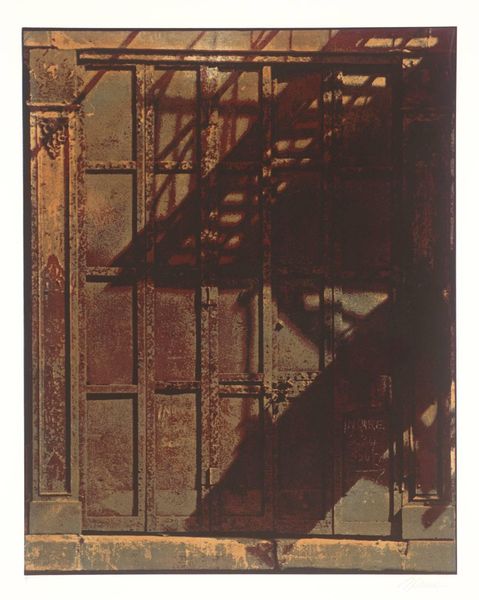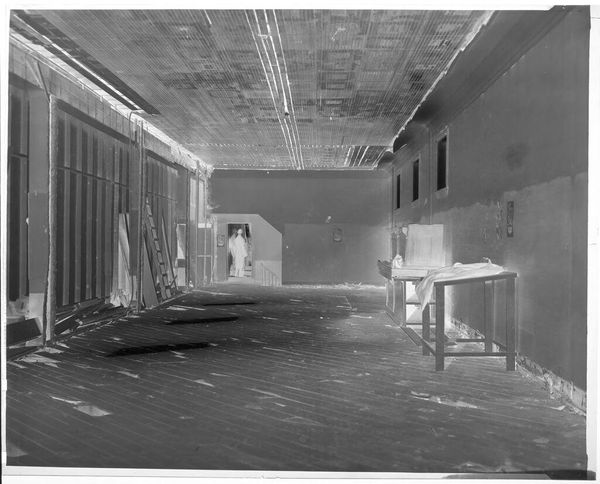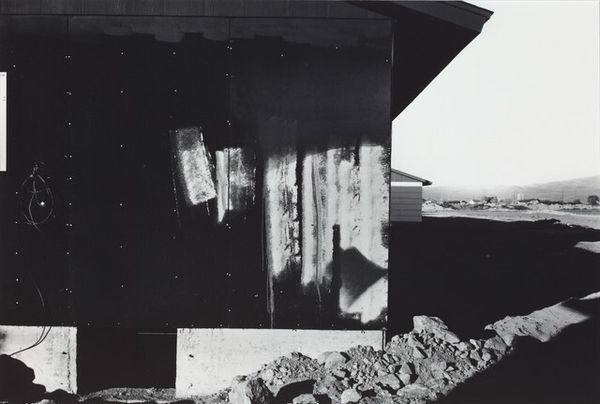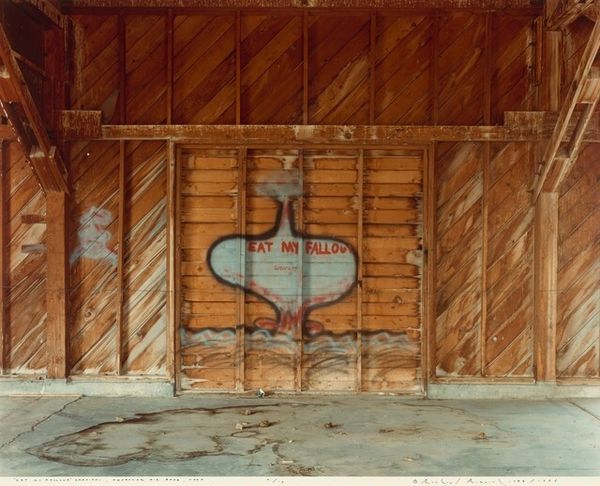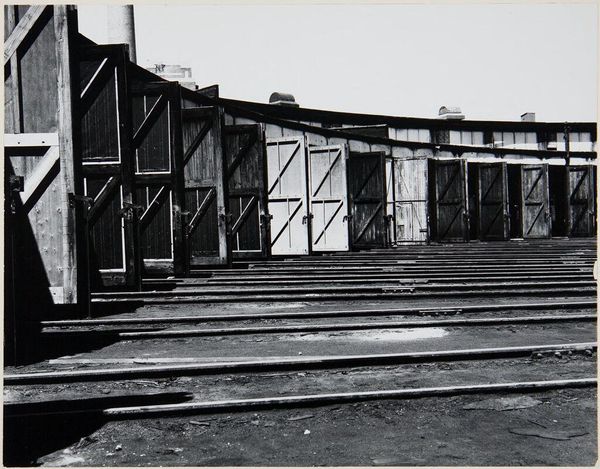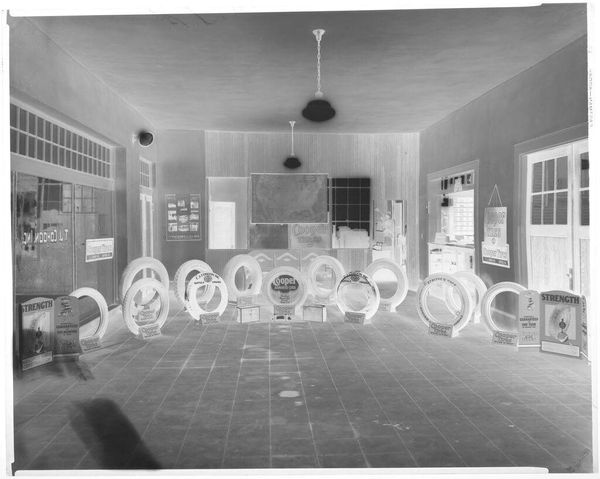
Office, Project W-47 Support Hangar, Wendover Air Base, Utah Possibly 1989 - 1995
0:00
0:00
photography, site-specific
#
conceptual-art
#
landscape
#
photography
#
site-specific
#
modernism
#
realism
Dimensions: image: 71.7 x 90.5 cm (28 1/4 x 35 5/8 in.)
Copyright: National Gallery of Art: CC0 1.0
Curator: I am drawn into the visual language that creates almost dreamlike experience when viewing this space. It whispers of untold stories. Art Historian: Precisely. What you're observing is Richard Misrach’s photographic work, believed to be taken sometime between 1989 and 1995. Its full title is, "Office, Project W-47 Support Hangar, Wendover Air Base, Utah." Curator: Ah, so location is vital. Utah. That arid landscape echoes in the worn, wooden bones of this building. Tell me more, what historical context do we need to consider when examining an image like this? Art Historian: Wendover Air Base holds significant weight in twentieth-century history; particularly its role as a training ground for bomber pilots during World War II. The setting contributes significantly to understanding its layered meaning and purpose. Curator: I notice how the sun streams in, piercing the darkness with these concentrated spots. Almost violent. Are these random apertures or calculated piercings? I see decay in conversation with these striking elements. Art Historian: That's a great observation! I'd say that natural erosion over time appears to have created these punctures in the roof and walls, allowing for the infiltration of light. Time, disuse, abandonment, and the power of elements are all active co-authors here, alongside Misrach himself. Curator: So this piece embodies not just a stillness, but also this temporal violence inherent in sites once central to war machinery. It reminds us about the costs and residues of the past in modern history, almost as an intervention. Is there a commentary here on militarization of landscapes and our memory of events that linger after? Art Historian: I completely agree! And beyond militarization, there is a sharp statement about governmental secrecy too, particularly since “Project W-47” probably served clandestine purposes at Wendover Air Base that haven't been revealed yet. This sense of a cover-up certainly augments the sense of somber. Curator: Understanding such historical layers can truly illuminate photography such as this piece by Misrach; I feel encouraged to examine more of how the landscape and its socio-political contexts weave together and ask new questions. Art Historian: Me too. Hopefully, we can shed light on histories often lurking underneath the visual surfaces presented to us, even in seemingly still shots like this photograph.
Comments
No comments
Be the first to comment and join the conversation on the ultimate creative platform.

